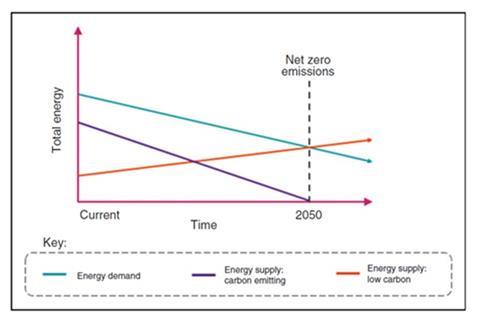NABERS UK will both act as an engine to better understand our buildings, and to drive the energy and carbon reductions our climate so urgently needs. The expected financial rewards for building owners create the critical virtuous circle which can fund building performance improvement. NABERS Energy Assessor, Phil Tower from Verco discusses the performance gap, why it exists, why it impacts on net zero and how NABERS can help.

At Verco, we spend a lot of time analysing the performance of existing commercial buildings. In our energy audit work, we often identify reduction opportunities for a building amounting to ~25% of its total energy consumption. These can be implemented at low cost by tweaking the building controls.
Whilst it is exciting for us when we identify significant opportunities for our clients to save energy, it is also frustrating to realise that, on a national scale, millions or even billions of pounds are wasted each year on ‘unnecessary’ energy consumption, not to mention the associated carbon emissions.
What is the performance gap, and why does it exist?
A neat definition of the performance gap for existing buildings is the difference between the energy a building should consume, versus the energy it does consume each year. There are many possible reasons why many buildings are under performing, such as:
- Changes to building controls: equipment may be ‘temporarily’ switched on to operate 24/7 but is then left operating unnoticed for months or years.
- Stunted handover between construction and operation: although there are many buildings designed in a ‘smart’ fashion with clever controls, it is common that the operators of a building are not made aware of these features and have no knowledge of how to exploit them to save energy.
- Changes to building use: especially with post-covid working patterns, actual average office occupancy (especially on Mondays and Fridays) can be as low as 20 – 40% of original design intent. For key systems such as ventilation, something as simple as the systematic over supply of fresh air can lead to significant energy wastage.
Why does the performance gap impact net zero?
The UK has made some great strides in its progress towards net zero through, for instance, taking coal out of the electricity generation mix and growth in generation from wind and solar. However, if we are to have any chance of using only zero carbon sources in 2050, there is a need for significant reductions in total energy demand, as shown by Figure 1 below[i]. All buildings in the future will need to be operated in an efficient manner.

Figure 1. The principle of reaching net zero by 2050: total demand is met by zero carbon energy.
How does NABERS help?
NABERS UK is a widely respected framework for evaluating the actual energy performance of office buildings, verified by measured energy use over a year, in contrast to assessments of design intent like EPCs and BREEAM. NABERS UK ratings delineate whole building energy use between landlord and tenants. Appropriate adjustments are made for factors such as occupancy hours and density and regional climate to ensure a level playing field. Ratings should be repeated annually, providing significant incentive for site teams to drive site performance through periodic review of energy consumption, regular plant optimisation and implementing energy efficiency measures. A building with a higher NABERS rating indicates it is better operated and better maintained. It is therefore anticipated the UK market will follow the experience of Australia (where this scheme originated) and see higher rated buildings equated with more desirable spaces to occupy, able to secure a higher rent, longer retentions, and asset value premiums.
The principle underlying the whole NABERS framework is that buildings which receive no scrutiny of their actual performance are likely to have significant avoidable energy waste, whereas buildings which have their performance regularly measured, rated against peers, and published have an in-built incentive for performance optimisation. NABERS UK will both act as an engine to better understand our buildings, and to drive the energy and carbon reductions our climate so urgently needs. The expected financial rewards for building owners create the critical virtuous circle which can fund building performance improvement.
Join our webinar: “Three good reasons to align your net zero property ambition with NABERS UK Ratings.”

If you would like to learn more about NABERS UK and hear about some case studies of the principles in action, join our webinar on 2nd November. NABERS UK instigator Robert Cohen, and licensed NABERS Energy Assessor Phil Tower will present a guide to NABERS: its benefits, and the pros and cons of the alternatives.
Find out more and register here:
[i] Cohen RR, Desai K, Elias J and Twinn R, “Net zero carbon: energy performance targets for offices”, BSER&T online 09 February, 2021.





























No comments yet